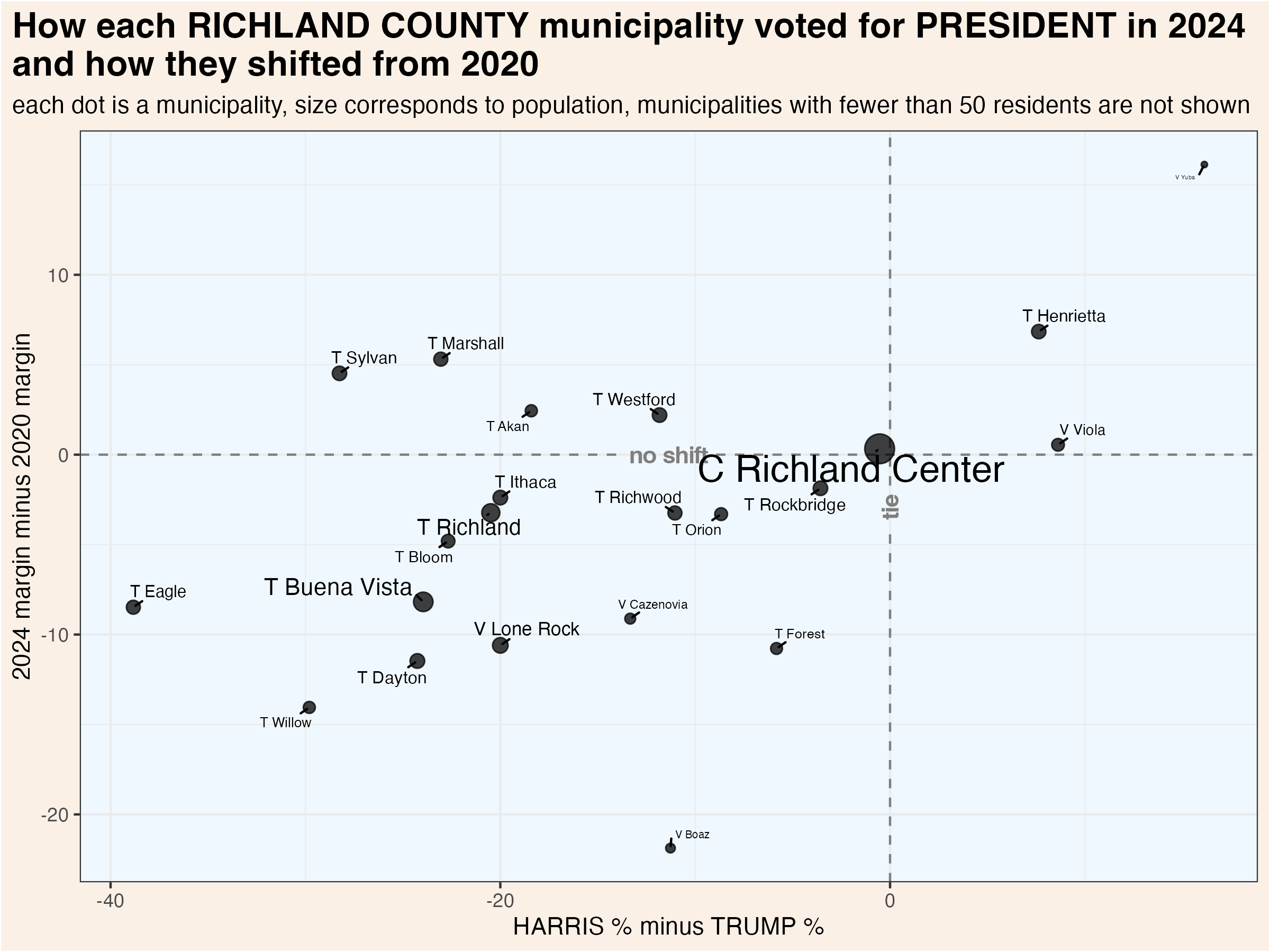
55 Richland
Richland County (pop. 17,000) is located in southwestern Wisconsin, about 60 miles west of Madison. Its population is 93% white and has lower average levels of educational attainment, a lower median income, and a higher poverty rate than the state average. Politically, the county is competitive, with a Republican lean. Donald Trump won the county twice. Evers carried it in 2018 and narrowly lost it in 2022.
55.1 Demographics

55.2 County Election Results

Click each column name to sort its values.
55.3 Municipality Election Results
About 30% of the county lives in the City of Richland Center, with the remainder spread across small towns and villages. A variety of political trajectories can be found among these municipalities, but many of them are quite competitive, having delivered majorities to different parties from one election cycle to another.
This map shows the location of each municipality in the county, as it existed in 2022.

These dot plots show the most recent election results in each municipality.



To more clearly illustrate recent changes in municipality voting trends, these scatterplots compare the most recent vote for president and senator with the shift from that office’s previous election.


These maps show show every election result since 2000 in each municipality.



Click each column name to sort its values.
55.4 Supreme Court Election Results
Wisconsin’s Supreme Court has 7 justices, each of whom are elected to 10 year terms in statewide elections held in April. State law prohibits more than one Supreme Court election from being held in a single year. If a seat becomes vacant, the governor appoints a replacement who serves until the next year in which no court election is already scheduled. If more than two candidates achieve ballot access, a nonpartisan, top-two primary is held in February.
Court elections are formally nonpartisan, but candidates are usually supported by either liberals or conservatives. In recent years, it has become common for the Democratic and Republican parties to endorse and actively campaign on behalf of favored judicial candidates. The liberal and conservative labels indicated in the following graphs and tables are based on widely recognized tendencies, not any formal affiliation.
55.4.1 County Election Results
This graphic compares how presidential, gubernatorial, and court elections have trended over the past quarter century. Click the “Table” tab to see detailed results for the Supreme Court races.

55.4.2 Municipality Election Results
The following table shows the results of each Supreme Court election by municipality. The graphic visualizes the shifts over the past three court elections.
